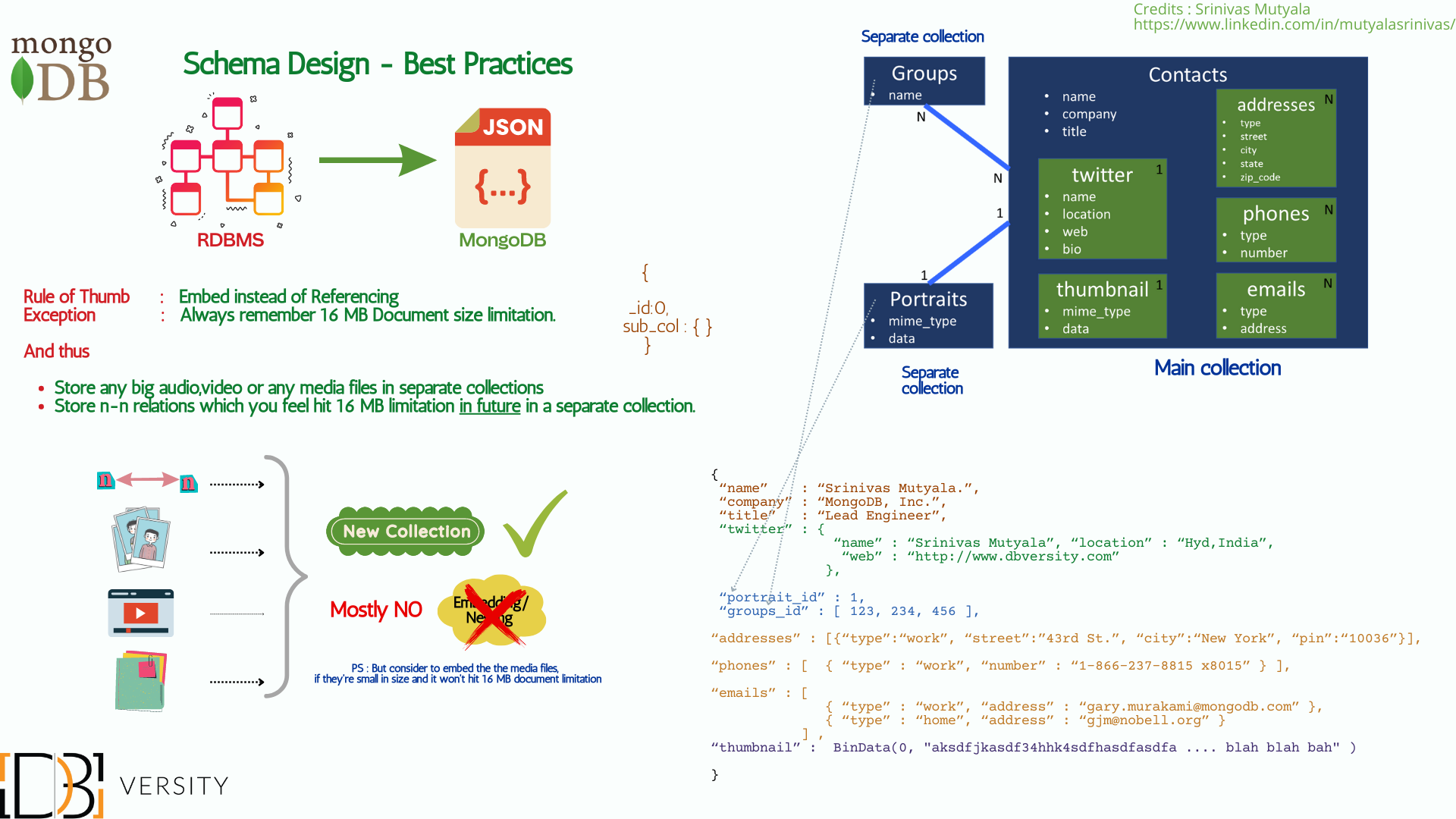MongoDB Schema Design – Best Practices
Below are MongoDB schema design best practices:
- Understand your data and application requirements: Before designing your schema, thoroughly understand your data model and application’s requirements. This includes understanding the relationships between entities and the types of queries you’ll be performing.
- Denormalize your data: MongoDB is a document-oriented database, which means it supports embedded documents and arrays. Take advantage of this by denormalizing your data and embedding related information within a single document. This helps reduce the need for joins and improves query performance.
- Optimize for the most common queries: Design your schema to optimize the queries that are most frequently executed in your application. This may involve duplicating data or reshaping your documents to align with the query patterns.
- Avoid deeply nested documents: While nesting documents can be helpful for denormalization, avoid excessive nesting, as it can lead to performance issues and make updates more complex. Aim for a balance between denormalization and document size.
- Use indexes strategically: Indexes significantly improve query performance. Identify the fields used in frequently executed queries and create indexes on those fields. However, be mindful of the trade-offs associated with indexes, such as increased storage requirements and slower write performance.
- Consider data growth and scalability: Plan for data growth and scalability when designing your schema. Anticipate the future size of your documents, the number of documents, and the potential sharding or replication needs of your application.
- Leverage the strengths of MongoDB: MongoDB provides features like sharding, replication, and auto-balancing, which can enhance the performance and availability of your application. Understand and utilize these features to meet your scalability and high-availability requirements.
- Regularly analyze and optimize queries: Periodically review your application’s query performance using tools like the MongoDB profiler or the explain() method. Identify slow queries and optimize them by creating appropriate indexes, reshaping the schema, or reevaluating your data access patterns.
- Plan for schema evolution: As your application evolves, your schema may need to change. Design your schema to be flexible enough to accommodate future changes without requiring extensive data migrations.
- Document your schema design decisions: Document the rationale behind your schema design choices. This helps the development team understand the schema structure and assists with future modifications and optimizations.
Remember that these best practices are general guidelines and may vary depending on your specific use case and requirements. It’s essential to thoroughly analyze your application’s needs and performance characteristics to design an effective MongoDB schema.


Comments are closed, but trackbacks and pingbacks are open.